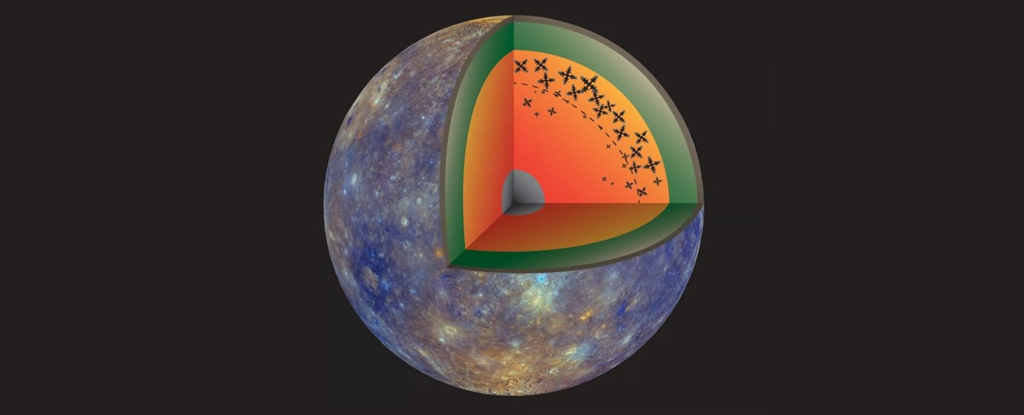Ganymede Is Like a 'Snowglobe' Inside, Which Could Explain Its Mysterious Magnetism
05 January 2024
By ALAN JOHNSTON, UNIVERSE TODAY

diagram of iron snow overlaid with image of ganymede
Iron snow in the core of Ganymede could help explain its mysterious magnetism. (Ludovic Huguet and map texture from NASA/Johns Hopkins University Applied Physics Laboratory/Carnegie Institution of Washington)
Jupiter's largest moon, Ganymede, features a surprisingly strong magnetic field for its size. Tidal effects from Jupiter continually stretch and squeeze the moon, keeping its core warm and driving the magnetic field. But the exact geological processes occurring within the core are not fully understood.
Now, a new experimental study has put one of the leading models of core dynamics to the test: the formation of crystalized 'iron snow'.
The iron snow theory is like a geological 'weather model' for a planetary core: it describes how iron cools and crystalizes near the upper edge of the core (where it meets the mantle), then falls inwards and melts back into the liquid centre of the planet.
Ganymede's core, in other words, is a molten metal snowglobe, shaken and stirred by Jupiter's gravity.
More:
https://www.sciencealert.com/ganymede-is-like-a-snowglobe-inside-which-could-explain-its-mysterious-magnetism
